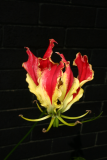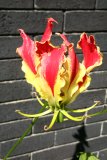Additional notes (click to expand)
Commemorative
Cultivar named for a member of the Rothschild banking family.
Stearn, W.T. (1996). Dictionary of Plant Names for Gardeners. Cassell. p.261
Medicinal
Grown commercially for a chemical compound (Colchicine and related alkaloids). Used traditionally to treat intestinal worms, bruises, infertility, skin problems and impotence. Sap from the leaf tip has been used for spots by Tswana and Masai labourers.
PlantzAfrica.com. South African National Biodiversity Institute, South Africa. www.plantzafrica.com
Colchicine, the principal constituent, is used for treating gout, as it inhibits the action of leucocytes which, in phagocytosing urate crystals, cause the inflammation.
Multiple traditional medicinal uses of this plant in Africa and India, but sometimes with fatal results.
Neuwinger, HD. (1996). African Ethnobotany: Poisons & Drugs, Chapman & Hall p.554-561
Other use
In Africa and India it has been used as a poison for hunting, abortion, suicide and murder.
Wink, Michael & Ben-Erik van Wyk (2008). Mind-Altering and Poisonous Plants of the World. Timber Press
Phytochemistry
Colchicine, the principal constituent, is used for treating gout, as it inhibits the action of leucocytes which, in phagocytosing urate crystals, cause the inflammation.
Neuwinger, HD. (1996). African Ethnobotany: Poisons & Drugs, Chapman & Hall p.559-561
Toxicity
Tubers used as an arrow poison, for murder (in Sri Lanka, Burma and India) and suicide. Also used to poison livestock. Multiple traditional medicine uses, but several fatalities are recorded as a result of such use.
Principle alkaloid is colchicine, in highest concentration in the leaves. 'One of the most virulent poisons and most drastic purgatives'. Poison acts on heart, nervous system, gastrointestinal system and cell division. Death is slow, with hypotension, vomiting, diarrhoea, respiratory arrest.
See Phytochemistry.
See reference for full information.
Neuwinger, HD. (1996). African Ethnobotany: Poisons & Drugs, Chapman & Hall p.554-561
Toxic due to colchicine content.
Professor Anthony Dayan, 2022
Gloriosa superba L. 'Rothschildiana'
Family: COLCHICACEAEGenus: Gloriosa
Species: superba L.
Cultivar: 'Rothschildiana'
Common names: Glory Lily; Flame Lily
Distribution summary: Tropical Africa & Asia
Conservation status (IUCN Red List): Least Concern
Habit: Perennial
Hardiness: H2 - Tender; cool or frost-free greenhouse
Garden status: Not currently grown
Flowering months: July, August, September
Reason for growing: Medicinal, toxic
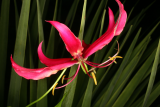
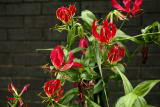
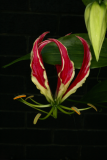
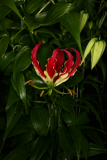
.JPG)
